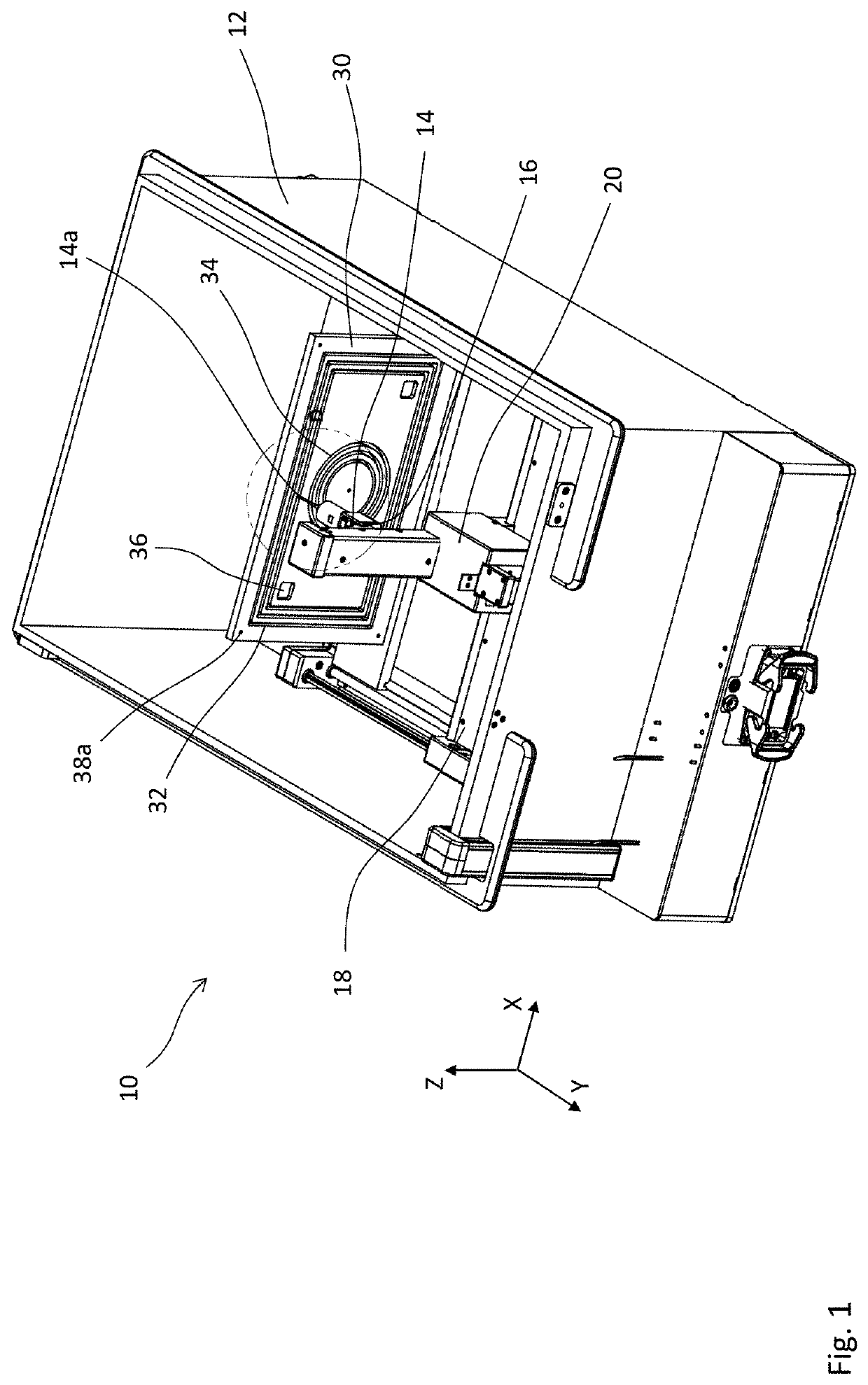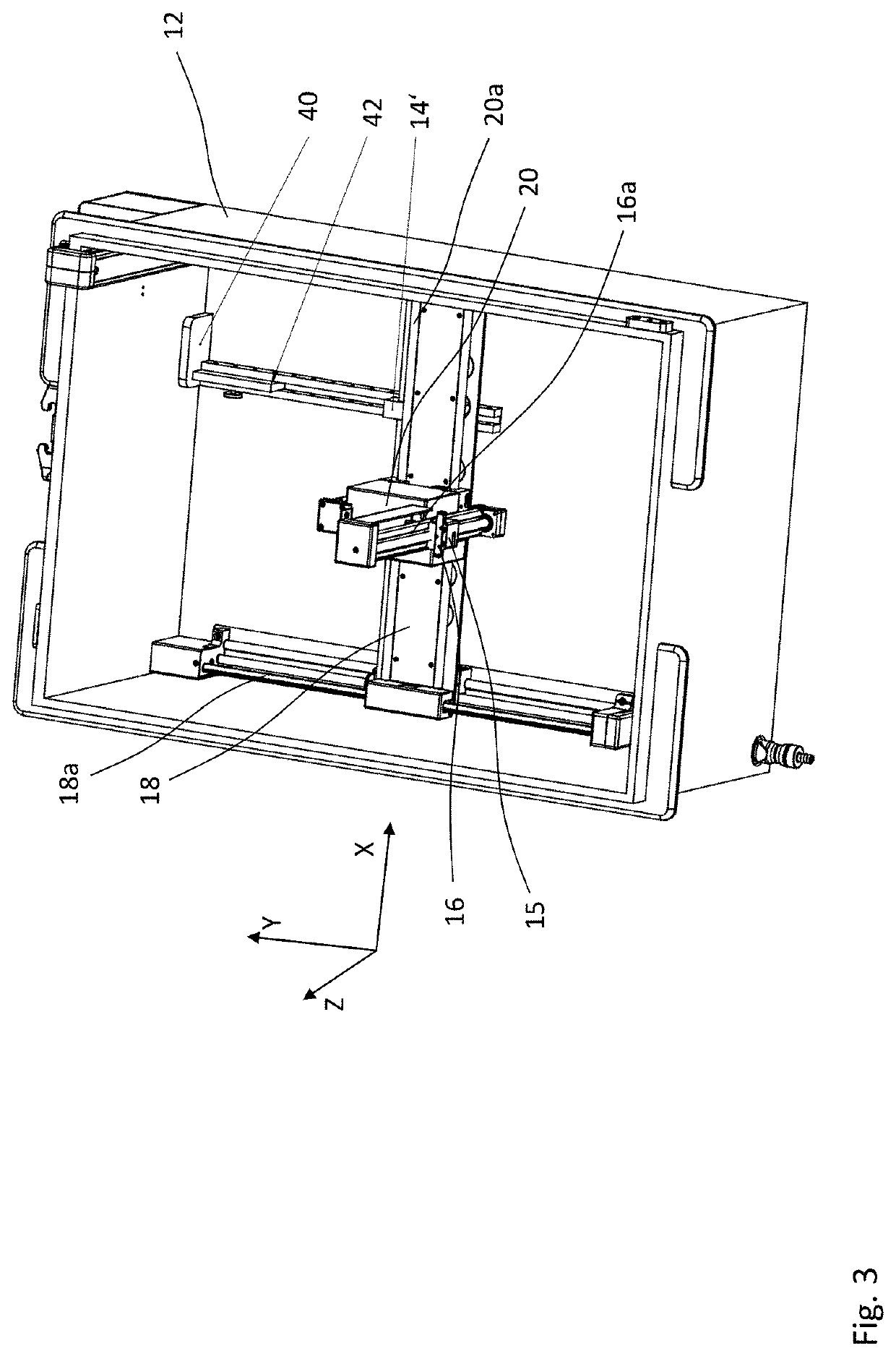Device for validating the axis linearity and/or the positioning accuracy of a displacement mechanism for a radiation detector and associated method of practice
- Summary
- Abstract
- Description
- Claims
- Application Information
AI Technical Summary
Benefits of technology
Problems solved by technology
Method used
Image
Examples
first embodiment
[0035]In FIG. 1, the device according to the invention can be seen. The device 10 shows a water phantom comprising a container 12 which can be filled with water. A tactile sensor element 14 with a sensor head 14a is arranged within the container 12. The sensor element 14 can be displaced via a displacement mechanism 16, 18, 20 which comprises three carriages with which the sensor element 14 can be displaced along the three spatial axes X, Y, and Z which are orthogonal to each other. The sensor element 14 is thus displaceable along the Z-axis via a first carriage 16, along the Y-axis via a second carriage 18, and along the X-axis via a third carriage 20. The first carriage 16 runs on a first rail 16a, the second carriage 18 runs on a second rail 18a, and the third carriage 20 runs on a third rail 20a (see FIG. 3). The rails 16a, 18a, 20a all run orthogonally to one another, each along one of the three spatial directions. The three carriages 16, 18, 20 and the rails 16a, 18a, 20a of t...
second embodiment
[0042]With the device according to FIGS. 1 and 2, the axis position or respectively axis linearity of the radiation detector can thus be validated along all three spatial axes in a particularly simple and reliable manner under real conditions. The same applies to the second embodiment explained in the following.
[0043]FIGS. 3 to 6 show another embodiment of a device according to the invention which differs from the one previously explained in that, instead of the test plate 30, precision gauge blocks 42, 44, 46 are provided as standard elements, which can consist in particular of ceramic and can thus be MR-suitable.
[0044]FIG. 3 shows a tactile sensor element 14′ which is arranged on the second carriage 18 and is thus movable along the Y-axis. A gauge block guide 40 which receives a gauge block 42 in FIG. 3 extends along the Y-axis. In this view, the receiving element 15 already discussed previously can be seen on the first rail 16, which element serves to receive the radiation detect...
PUM
 Login to View More
Login to View More Abstract
Description
Claims
Application Information
 Login to View More
Login to View More - R&D Engineer
- R&D Manager
- IP Professional
- Industry Leading Data Capabilities
- Powerful AI technology
- Patent DNA Extraction
Browse by: Latest US Patents, China's latest patents, Technical Efficacy Thesaurus, Application Domain, Technology Topic, Popular Technical Reports.
© 2024 PatSnap. All rights reserved.Legal|Privacy policy|Modern Slavery Act Transparency Statement|Sitemap|About US| Contact US: help@patsnap.com










